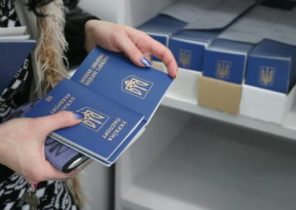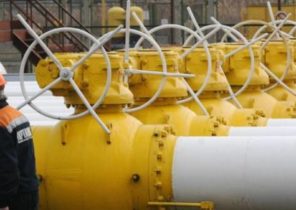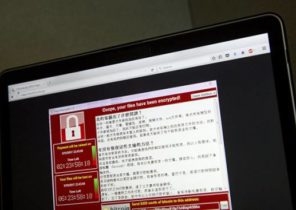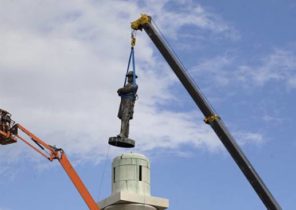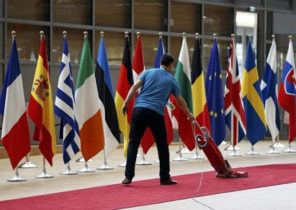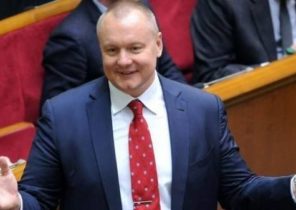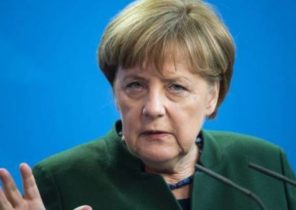
I absolutely do not agree with the decision of the President of trump to strike with cruise missiles in response to an attack using chemical weapons that occurred last week in Syria, but in moral terms I can’t disagree with him.
According to available information, the President moved to action after seeing pictures of innocent women and children, in the last agony, which was doomed to die by accident, caught in the wrong place. It was another tragedy in an endless series of other horrific episodes of the civil war, with no end in sight.
Trump had the best of intentions, determined to punish the villains responsible for this undoubted crime against humanity. But in the dangerous game of international politics, Trump should, without delay, to understand one uncomfortable but important truth. The foreign policy where the good guys punishing the bad guys for committing atrocities — this is a simplification, which may lead to disaster.
Actions trump can have even more serious consequences if he decides to hit again — to punish Assad for another chemical attack or some other barbaric thing. Think about it. A single inaccurate American attack, resulting in war-torn Syria killed Russian soldiers, can become the spark that will ignite a much larger conflict and turn it into a war that has been raging from the Baltic to the Ukraine and the Middle East. And because Washington and Moscow have a huge stockpile of nuclear weapons, the stakes in this confrontation are extremely high.
Let’s draft a simple scenario in which one tragic error will create conditions for direct conflict between the US and Russia. We understand that there is no need of fantasy by Tom Clancy (Tom Clancy) to represent the unthinkable.
Imagine for a second that two weeks later, Syrian President Bashar al-Assad holds a second attack using chemical weapons, claiming the lives of 400 people outside Damascus. Trump is on escalation and runs 150 cruise missiles, to inflict even more damage to air Assad. But this time everything goes wrong. The Americans are trying to inform the Russian government that’s about to strike, but to do so it is much more difficult, because Moscow after the previous strike canceled the agreement is about resolving conflict situations. Washington informs the Russian Ambassador four hours before the attack, but this information is for official authorities are not moving fast enough, and a tragedy occurs. One of the missiles “Tomahawk” hits on Syrian air base, where Russian special forces, which the administration trump is unknown. Sputnik, RT and Russian media in the country are beginning to broadcast horrible images of dead and seriously wounded soldiers who lay in ruins, and groaning in pain. 46 Russian servicemen were killed and 24 were seriously injured, they reported.
Putin knows that he must give a harsh answer, because Russian public opinion simply would require such action. He also knows that action in Syria will not give much effect, and the us cruise missiles and stealth aircraft will eventually destroy the Russian air defense and erase are there Russian with the face of the earth. Then he decides to play for high stakes. Putin ordered sudden and large-scale exercises with the participation of 200 thousand troops from the army, Navy and nuclear forces that are in a high state of combat readiness, from Europe to Central Asia. At the same time it begins mass delivery of weapons to the separatists in Eastern Ukraine. Less than a week, supported by Moscow separatist forces begin an offensive on Mariupol. The US representative to the UN, Nikki Haley makes a passionate plea for the UN to provide lethal weapons to Ukraine, and trump decides to sell the Kyiv modern anti-tank weapons, significantly raising the stakes.
But Putin will not stop here. He decides that he needs to create problems for Washington in Asia. Therefore, the Russian leader sells the s-400 to China and offers him the joint development of a new fighter stealth F-35. China agrees. Putin also fully supports the positions taken by Beijing in the South China sea. This is an ominous decision, if not more, and China is beginning more courageously to place on artificial Islands fighters and bombers.
And then the situation becomes even worse. President trump ordered to make a demonstration of American military power and solidarity with allies. It sends advanced aircraft F-22 Raptor to patrol the skies over the Baltic, and Russia in response to the three times increases the number of patrol aviation in the region. Many of the planes fly into the airspace of NATO. Another week the world holds its breath, watching to see how NATO and Russian pilots test the patience and will to each other in the skies over the Baltic — while one Russian plane flies too close to the American fighter and not facing him. Both aircraft falling on the Lithuanian-Russian border. The pilots are killed.
The world is horrified. Now Russia and America on three potential fronts in the Baltic States, in Ukraine and in Syria — engage in direct confrontation, looking at each other eye to eye, and no one wants to concede. Trump orders to lead strategic nuclear forces to the highest state of combat readiness. Putin is doing the same thing. Since the Caribbean crisis, the world never came so close to the edge of the nuclear abyss. What’s next?
Next steps in Syria will be critical.
It was clear that even with all the bombs in the world Syria will not be able to reunite. But these bombs can cause a military confrontation, which the world has not seen for several decades. In this regard, it should be said that the original position of the trump (not to get involved in a civil war that claimed countless lives and turned millions of people into refugees) were correct.
The good news is that Trump is still not too late to change course and go down a diplomatic path that will lead to a weakening of the violence in Syria and to the end of one of the bloodiest wars in modern history. But if diplomacy fails, or if the parties want to fight on, America will be only one choice: no matter what to stay away from them.
Harry Kazianis Director of defense studies at the Center for the national interest (Center for the National Interest) created by former US President Richard Nixon.

